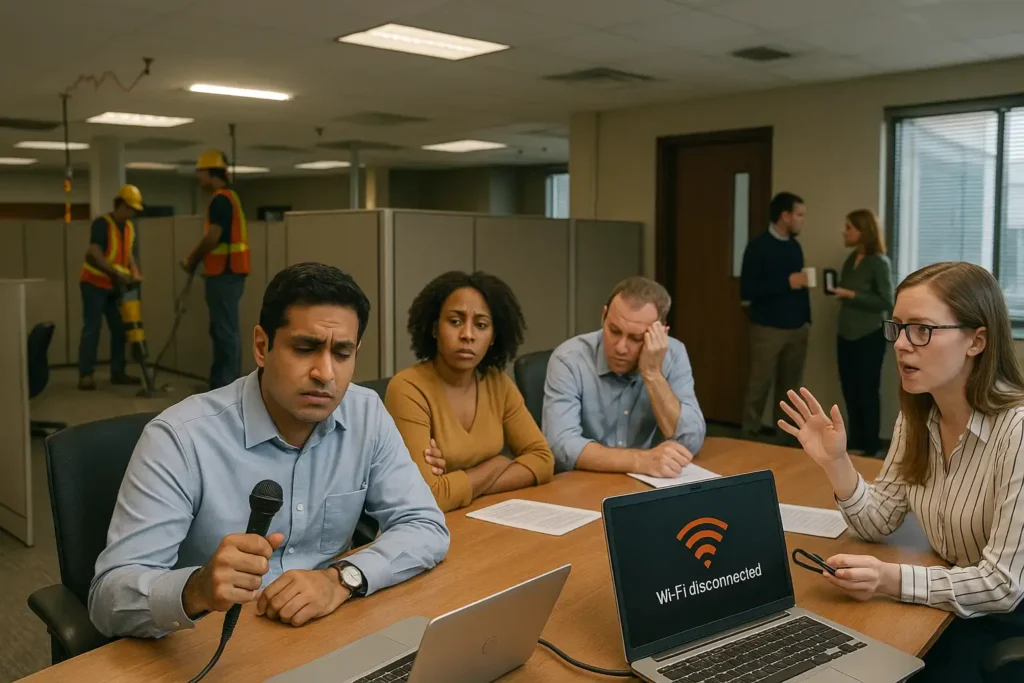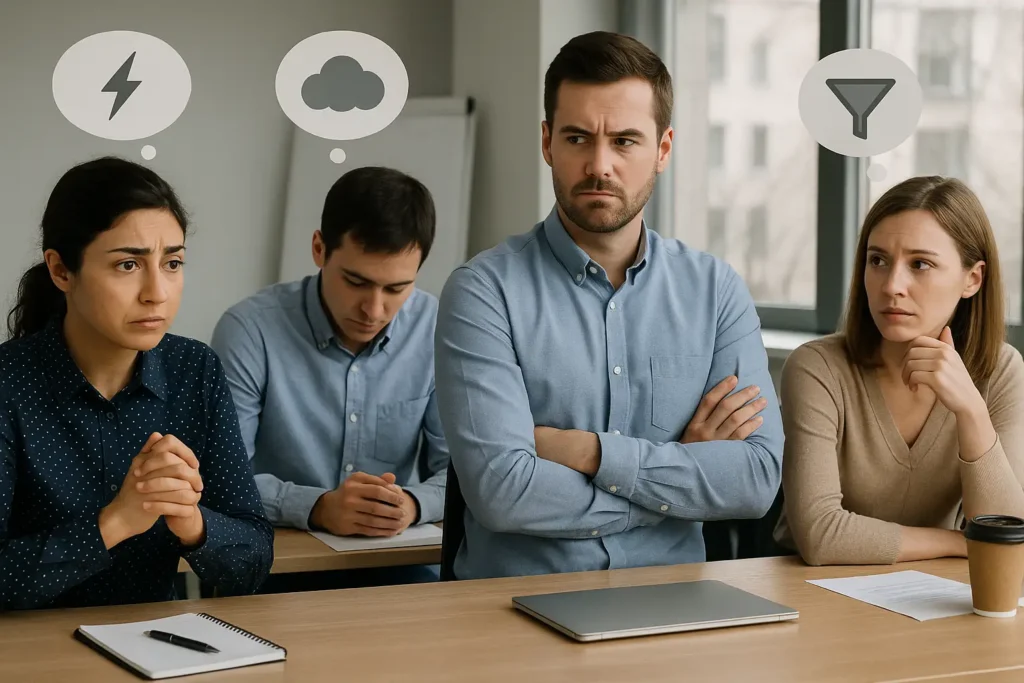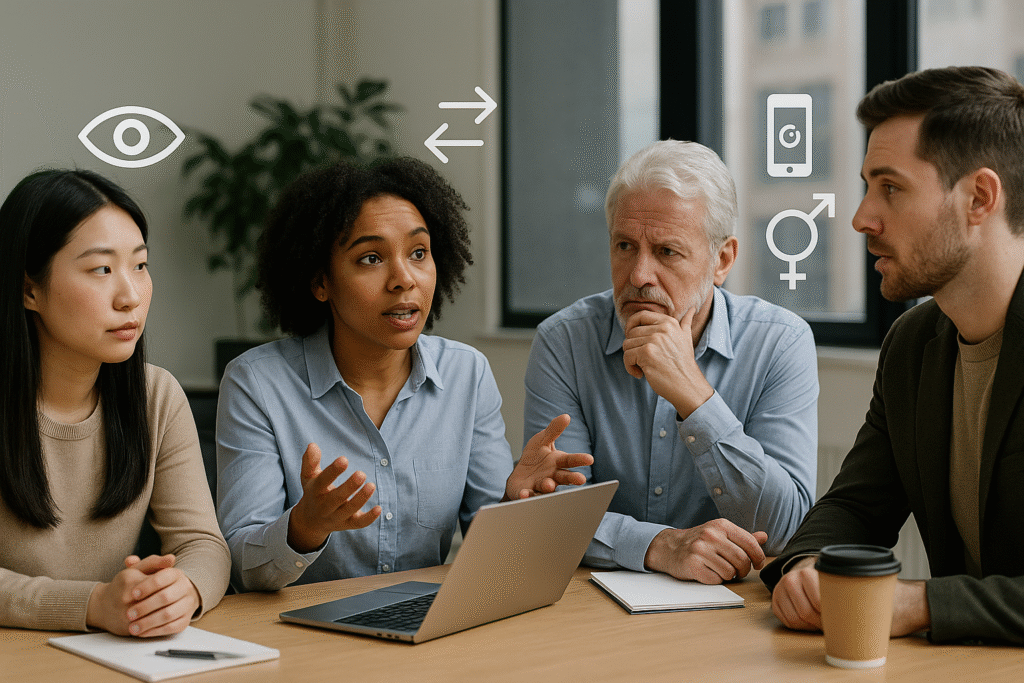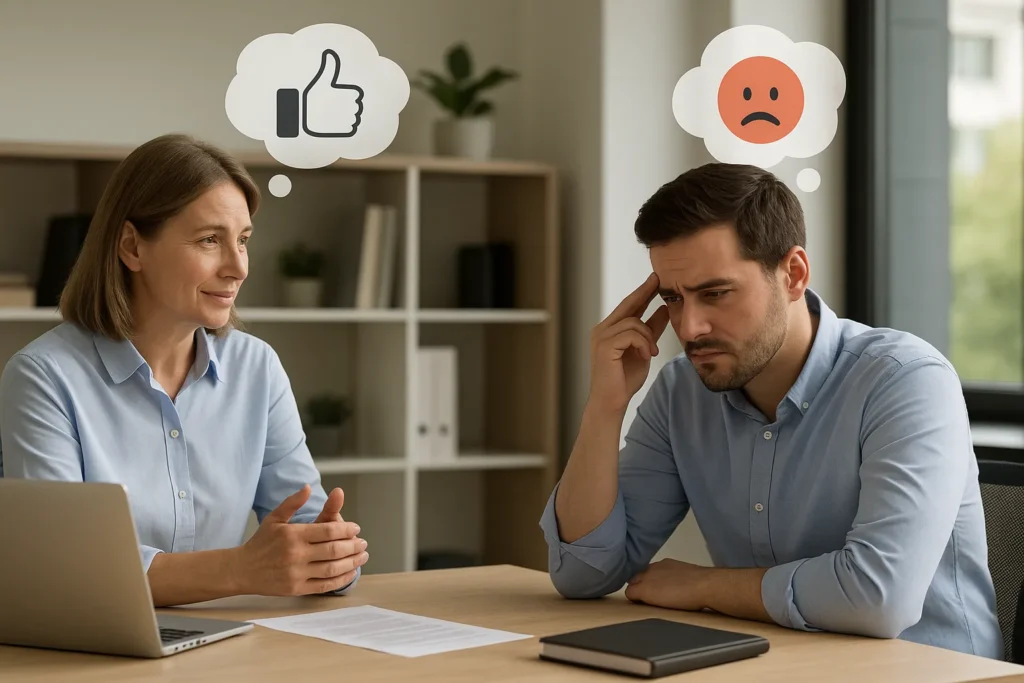Barriers To Communication
Communication is part of almost everything we do. We talk, listen, write, and message every single day. Yet, even when we try our best, messages often get mixed up or misunderstood. You might be speaking clearly, but the other person still misses the point. So, what exactly gets in the way? Why do even simple conversations sometimes feel so hard?
These obstacles are called barriers to communication. They pop up in personal relationships, at work, in schools, and even online. Understanding these barriers can make life easier, relationships stronger, and teams more successful. If you’ve ever wondered why good ideas get ignored, why teams miss deadlines, or why two people walk away from a talk even more confused, this post is for you. Let’s look at the real reasons behind these breakdowns—and how to avoid them.
What Are Barriers to Communication?
Barriers to communication are anything that prevents messages from being sent, received, or understood as intended. These challenges show up in countless ways: a noisy background, unclear words, mixed signals, or even a misunderstanding caused by different cultures. Sometimes, a barrier is easy to spot, like a weak internet connection or language difference. Other times, it’s more subtle, like the feeling of being judged or not heard.
These barriers can make simple interactions complicated, leading to mistakes, conflicts, and missed opportunities. In workplaces, poor communication can hurt morale, reduce productivity, and damage trust between team members. In families, these challenges can lead to hurt feelings and distance. Everywhere, they cause stress and confusion. Identifying the most common types can help you avoid these problems before they start.
Types of Communication Barriers
Experts and researchers have grouped barriers to communication into several major categories. Understanding each type can help you spot problems early and respond effectively.

Physical and Environmental Barriers
Physical and environmental barriers come from the setting or surroundings where communication happens. Examples include:
- Loud noises in the background, like construction or chatter
- Poor lighting, making it hard to read nonverbal cues
- Distance—either being in different rooms or working remotely
- Faulty equipment: bad microphones, broken speakers, or unreliable Wi-Fi


Language and Semantic Barriers
Language barriers come from differences in language, jargon, slang, or unclear wording. Semantic barriers appear when the same words mean different things to different people.
- Colleagues who speak different native languages
- Using jargon or acronyms that others don’t know
- Slang or idioms that are confusing across regions
- Ambiguous language (e.g., “soon” could mean five minutes or five days).
Emotional and Psychological Barriers
Feelings and mental states shape communication. Stress, anxiety, or past experiences can block messages.
- Fear of criticism or judgment, causing someone to stay quiet
- Prejudice, bias, or stereotypes filtering what you hear
- Personal attitudes (closed-mindedness, resistance to change)
- Low motivation or lack of interest
Create a safe, open environment. Show empathy, respect others’ opinions, and address conflicts early. Emotional intelligence and active listening make a huge difference.


Cultural and Social Barriers
Culture shapes everything from gestures to expectations. Differences can lead to misunderstanding.
- Eye contact: respectful in some cultures, rude in others
- Different norms for interrupting or taking turns in conversation
- Generational gaps—different age groups have different communication styles
- Gender roles or status affecting who feels free to speak
Learn about your team’s or audience’s background. Be open and curious. Provide diversity and cross-cultural training. Ask about preferences and respect differences.
Technological Barriers
Technology helps us connect and get things done faster, but it can also create problems that block good communication.
- Slow internet, dropped calls, or video meetings that freeze can quickly break the flow of conversation.
- Not everyone feels comfortable using new apps, online tools, or even email. These differences can make some team members feel left out.
- Too many emails, group chats, and notifications can make it hard to keep up or focus on what’s important.
- If technology isn’t designed with everyone in mind, people with disabilities may struggle to join in or get the information they need.


Perceptual Barriers
We all see the world differently. Perception is shaped by our backgrounds, experiences, and beliefs. Two people can look at the same event and walk away with totally different views.
This happens a lot in workplaces. A manager may think they are offering helpful feedback, while an employee feels criticized. Personal filters and selective attention can block out what’s really being said.
Perceptual barriers aren’t always obvious, but they are powerful. Being aware of your own viewpoint, and asking about the other person’s perspective, can open new paths for understanding. It’s important to remember that everyone brings their own lens to a conversation.
Organizational and Systemic Barriers
The structure of a company or group can help or hurt communication. Strict hierarchies and too many levels can make people afraid to speak up. Information silos—where departments don’t share what they know—can lead to repeated mistakes and wasted effort.
Trust is a big factor. When people don’t trust their leaders or coworkers, they keep ideas to themselves. A lack of feedback or unclear roles also causes confusion.
Organizations that support open, two-way communication see better results. Regular meetings, anonymous suggestion boxes, or even informal chats can make a workplace feel more open. Leadership should make it clear that all voices are welcome.


Channel Barriers
The way you choose to communicate—a face-to-face chat, phone call, email, or instant message—can make a big difference in how your message is received. If you pick the wrong channel, your message might get misunderstood or ignored. Example Include
- Sharing sensitive feedback over email instead of talking in person can come across as cold or impersonal.
- Using a group chat for complex project updates can cause confusion, when a meeting would let everyone ask questions and stay on the same page.
- Overloading someone with texts when a quick call would be easier
Pick the best communication channel for your message. For urgent, complicated, or emotional conversations, choose face-to-face meetings or video calls. For quick updates or simple info, email or chat works fine.
Physiological and Disability Barriers
Sometimes, our bodies create obstacles to communication. Hearing loss, speech disorders, or vision problems all require special attention. Even being tired, hungry, or unwell can make it tough to concentrate or share clearly.
People with disabilities may need extra support—like sign language interpreters, captions, or accessible documents. Good communication means making sure everyone, no matter their ability, can take part.
Physical comfort is important, too. A room that’s too hot, too cold, or poorly lit can distract from the conversation. Small changes, like better lighting or seating, help remove these barriers.

Barriers in Different Industries
Healthcare
Barriers in healthcare can put lives at risk. Patients may not speak the local language or understand medical instructions. Doctors and nurses need to listen carefully and use simple words. Cultural sensitivity is key—small gestures can build trust or cause offense.
Technology also matters. Some patients prefer in-person visits, while others are happy with telemedicine. Making sure everyone understands their options and has access to care is vital.
Education
Schools and online learning platforms face both technology and language barriers. Not every student has fast internet or a quiet space for study. Teachers need to check in often, use clear instructions, and offer different ways to learn.
Cultural background, learning styles, and even disabilities affect how students receive information. Schools that support students’ needs see better results and happier learners.
Business
In business, barriers cost time and money. Missed deadlines, unclear roles, and lack of feedback all slow down progress. Teams with people from different backgrounds need to pay attention to culture, language, and communication styles.
Training, regular practice, and patience help people build these skills over time.
Nonverbal and Paralinguistic Barriers
Communication isn’t just about words. Tone, facial expressions, and body language carry a lot of meaning. If these cues don’t match the words, people get confused.
For example, saying “I’m fine” with a frown or a sigh sends mixed signals. Some cultures rely heavily on gestures and expressions, while others don’t. Virtual communication makes this even trickier because many nonverbal cues are lost.
Paying attention to both verbal and nonverbal signals helps make messages clear. On video calls, eye contact and smiling matter. In person, a nod or a handshake can show agreement or respect.
The Impact of Virtual Communication
Remote work and online conversations are more common than ever. But digital tools bring their own set of challenges. Without face-to-face contact, emotions and intent are harder to read.
People may misunderstand jokes, sarcasm, or short replies in texts or emails. Delays or “lag” during calls interrupt the flow. Not everyone feels comfortable speaking up in online meetings, either.
Adding video, using emoticons, and making time for small talk can help online communication feel more natural. Clear rules about muting, turn-taking, and using chat features keep meetings on track.
Effects of Communication Barriers
Poor communication has a real cost.
- Loss of Trust: Misunderstandings can make people doubt each other.
- Lower Productivity: Time is wasted correcting mistakes.
- More Conflicts: Small issues can turn into big arguments.
- Missed Opportunities: Great ideas get lost or ignored.
- Weaker Relationships: Frustration and confusion weaken bonds between team members.

Case Studies & Best Practices
- Healthcare: A hospital that started using interpreters for non-native speakers reduced medical mistakes and boosted patient satisfaction. Staff were also trained to speak clearly and avoid jargon.
- Education: Schools offering digital literacy classes for students and parents saw higher participation in online learning. Teachers used simple visuals and frequent feedback to check for understanding.
- Business: A global company replaced email-only updates with short daily meetings. This helped teams in different countries stay connected, clear up misunderstandings, and share ideas.
Each example shows that small changes can make a big impact.
